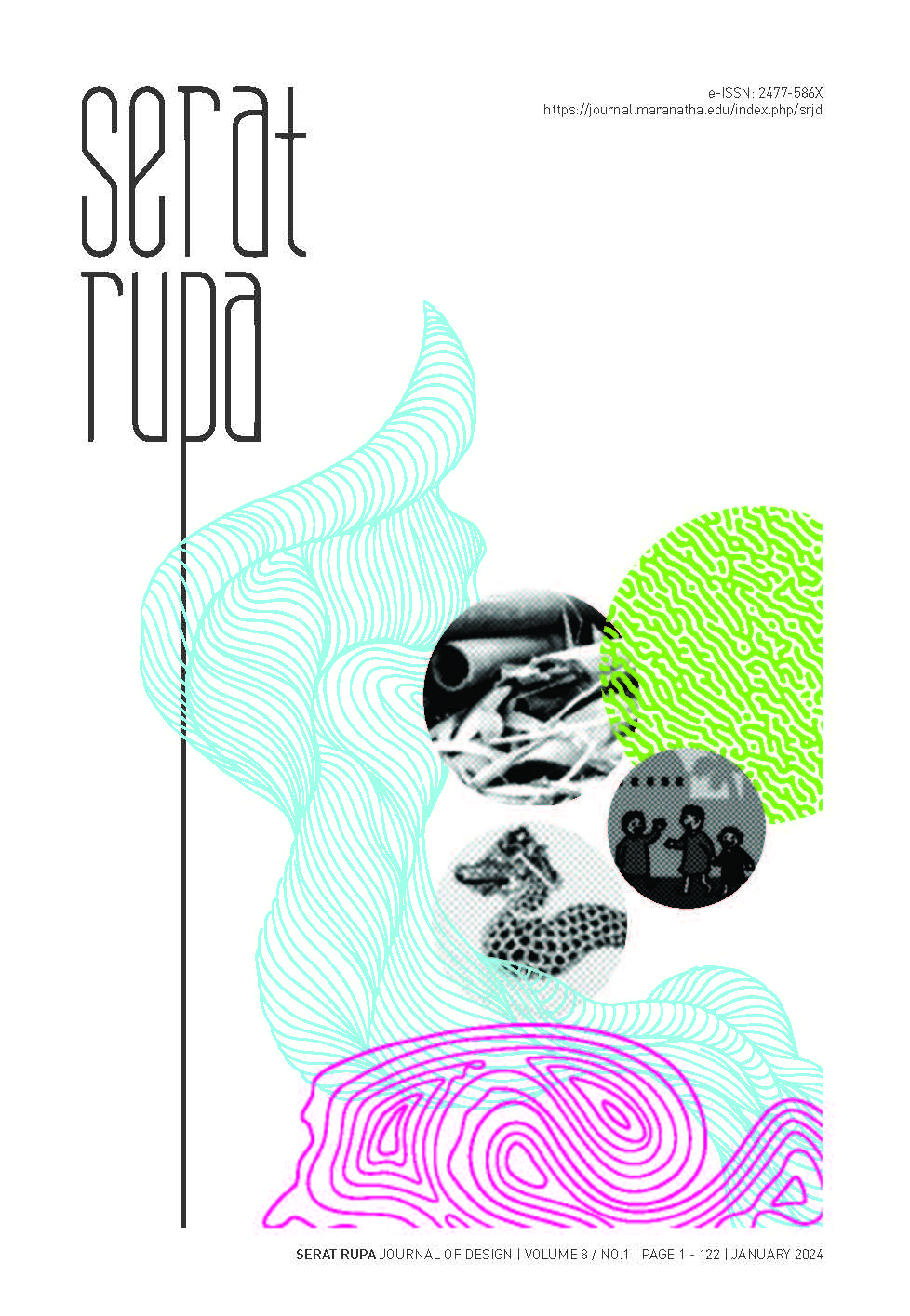Utilization of Bamboo Waste for Preschool Musical Toy with Surface Mimicry Approach
Main Article Content
Abstract
This design exploration activity is part of mimicry research (surface, behavior, function), process (formative, subtractive, additive) and system (integral, modular) which can be an alternative method in developing innovative products in the context of environmentally friendly and sustainable design.
Downloads
Article Details

This work is licensed under a Creative Commons Attribution-ShareAlike 4.0 International License.
References
Herawati, L., & Pawitra, T. A. (2013). Evaluasi data antropometri anak-anak usia 4-6 tahun di Jawa Timur dan aplikasi pada perancangan fasilitas belajar di sekolah. Jurnal Ilmiah Teknik Industri, 12(2), 142-150. https://doi.org/10.23917/jiti.v12i2.641
Ismail, M. J. B., Chiat, L. F., Yusuf, R., & Kamis, M. S. B. (2018). Comparison of dalcroze eurhythmics teaching approach with conventional approach to enhance kompang playing skills among Malaysian children. International Journal of Humanities and Social Science, 5(6), 64-69. https://doi.org/10.14445/23942703/IJHSS-V5I6P112
Nugraha, A. (2015). Angklung traditional Sunda: Intangible, cultural heritage of humanity, penerapannya dan pengkontribusiannya terhadap kelahiran angklung Indonesia. Jurnal Awi Laras 2, 2-7.
Panksepp, J., & Bernatzky, G. (2002). Emotional sounds and the brain: the neuro-affective foundations of musical appreciation. Behavioural Processes, 60(2), 133-155. https://doi.org/10.1016/S0376-6357(02)00080-3
Susanti, T., & Pamungkas, J. (2023). Analisis Penggunaan Alat Musik Rebana sebagai Media Pembelajaran Seni Musik Anak Usia Dini. Jurnal Obsesi, 7(2). https://doi.org/10.31004/obsesi.v7i2.3304
Tarnowski, S. M. (1999). Musical play and young children: a music techer can enhance a child’s learning and development by encouraging musical play activities. Music Educators Journal, 86(1). https://doi.org/10.2307/3399573

